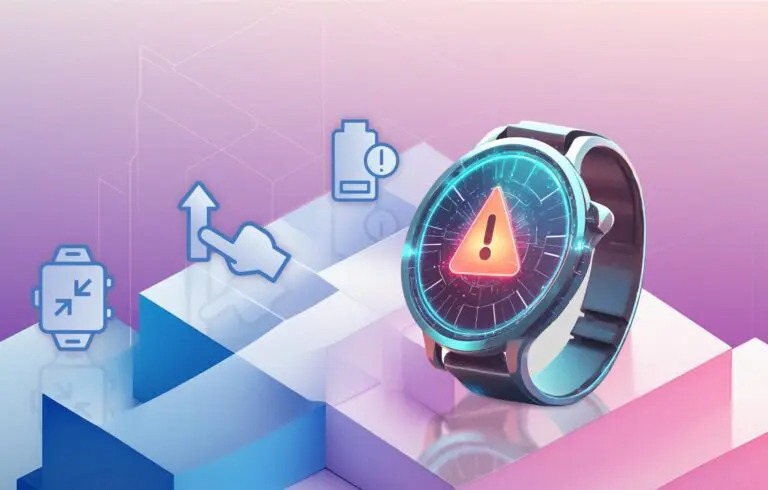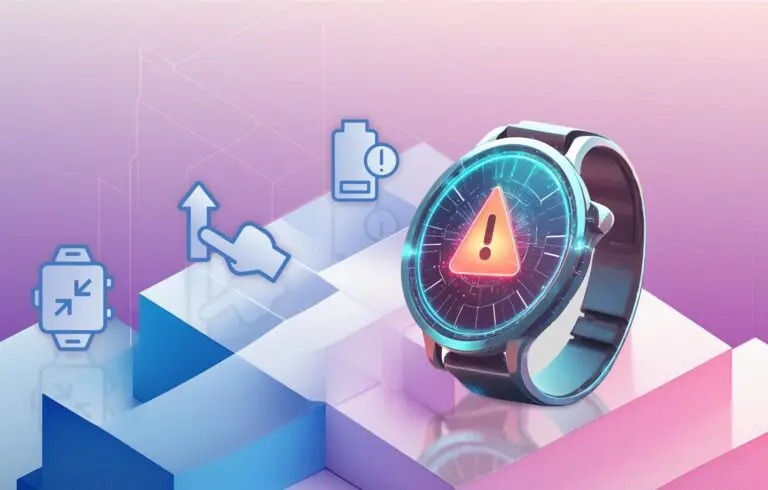In the rapidly evolving landscape of technology, wearable devices have emerged as a significant player, seamlessly integrating into our daily lives. Among these, smartwatches stand out, blending aesthetics with function. As we move toward highly personalized and integrated experiences, understanding key principles to design for wearable technology is essential.
Stuti Mazumdar & Vidhi Tiwari - May 2024

What Is Wearable Technology?
Wearable technology is a category of electronic devices designed to incorporate advanced computing and communication technologies to enhance a user’s daily life.
These devices seamlessly integrate into everyday accessories, such as clothing, watches, eyewear, or fitness bands, offering a range of functionalities beyond traditional timekeeping. Wearables often track health and fitness metrics, provide real-time notifications, and facilitate quick communication to act as an accessible medium between the user and their devices.
The evolution of wearable technology reflects a broader trend toward creating more intuitive and personalized user experiences, as these devices become an integral part of our interconnected and digitized lifestyles.
Common Challenges UX Designers Face When Crafting Wearable Interfaces

Of course, with every emerging technology comes great challenges for UX designers to solve. Here are some of the common issues that designers face when developing intuitive wearable solutions.
1. Limited Real Estate
Smartwatches are the most commonly used wearable devices, typically featuring a small screen with limited space to display information. This constraint corners designers into prioritizing critical content on the interface, ensuring no clutter on the screen.
2. Touch and Interaction Constraints
Smartwatches rely solely on touch, gestures on screen, and voice commands from the user. Owing to the limited real estate, smartphones have no room for complex gestures or intricate touch interactions.
3. Battery Life Limitations
Wearable devices should be power-efficient to ensure they last throughout the day. To ensure these devices work till the end of the day, it is ideal to avoid continuous animations and resource-intensive UI elements.
Principles of Efficient Design for Wearables
Crafting a user experience for a small screen size can be challenging. However, a few principles can act as a guideline for designers when working on wearable technology.
1. Keep Things Simple
In the world of wearables, simplicity is paramount. Cluttered wearable interfaces can lead to confusion and frustration. It may also add to the cognitive load on the users. UI design for wearables should embrace a clean and minimalistic approach, presenting information in a clear and concise manner. It is, thus, ideal to use legible fonts, well-defined icons, and intuitive navigation as they contribute to a user-friendly experience.
2. Integration with the Ecosystem
Wearables, such as a fitness tracker or smartwatches, are often part of a larger ecosystem, interacting with smartphones and other devices. Hence, the design should facilitate seamless integration, ensuring a cohesive experience for the user.
3. Minimal Interactions
Wearable devices come with limited screen space, making every pixel valuable to a designer. Hence, UX designers face the challenge of solving the user problem of displaying relevant information without overwhelming the user. Prioritizing essential elements and providing quick access through gestures can help users interact with the device seamlessly, making for a joyful experience.
4. Customization
Personalization has become a stepping stone of the modern UX design, and wearable devices are no exception. Users now find it essential to possess the ability to customize the interfaces they see on screen through colors, themes, and notifications to suit their preferences and needs. This not only enhances the aesthetic appeal but also creates a sense of ownership, strengthening the bond between the user and the device.
5. Accessible Design
Haptics, that is non-visual feedback, is an essential feature of wearable technology. Devices such as smartwatches or trackers are used by an array of people with physical or mental disabilities, making it difficult to use the device seamlessly. Hence, designers should make use of haptics to ensure effective feedback, such as vibrations or noise, for an accessible experience.
6. Fusing Style and Functionality
One of the primary reasons behind the success of wearable devices is their ability to embed style into function. The challenge lies in maintaining a delicate balance, ensuring that the device not only looks good but also performs its intended functions efficiently.
7. Device Specifications
Wearables, a prevalent digital accessory, carry different device specifications. Designers must be aware of them all before starting to devise a strategy and design processes.
This level of clarity helps you understand the scope of innovation and the limitations of the device hardware. For instance, different screens are capable of rendering colors and designs variably. Refresh rates are another aspect to care for when designing for these devices; you might want aesthetic animations but if your wearable devices won’t support it, it might hamper the experience.
Innovations in UX for Wearables

As technology advances, so does the potential for innovative UX design in wearables. Gesture controls, haptic feedback, and augmented reality are just a few areas where UX designers are pushing the boundaries. Integrating these features thoughtfully can elevate the user experience, providing a futuristic and immersive feel.




